Link-State Routing Protocols Routing Protocols and Concepts –


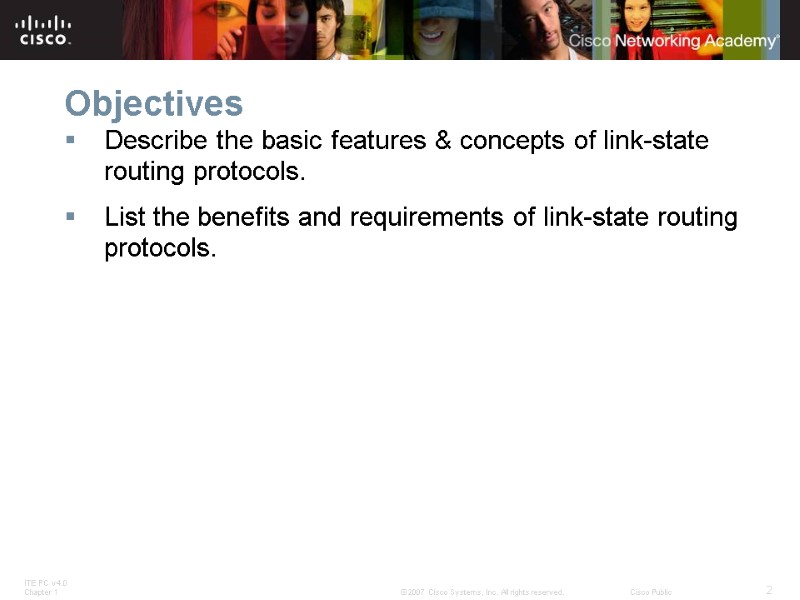
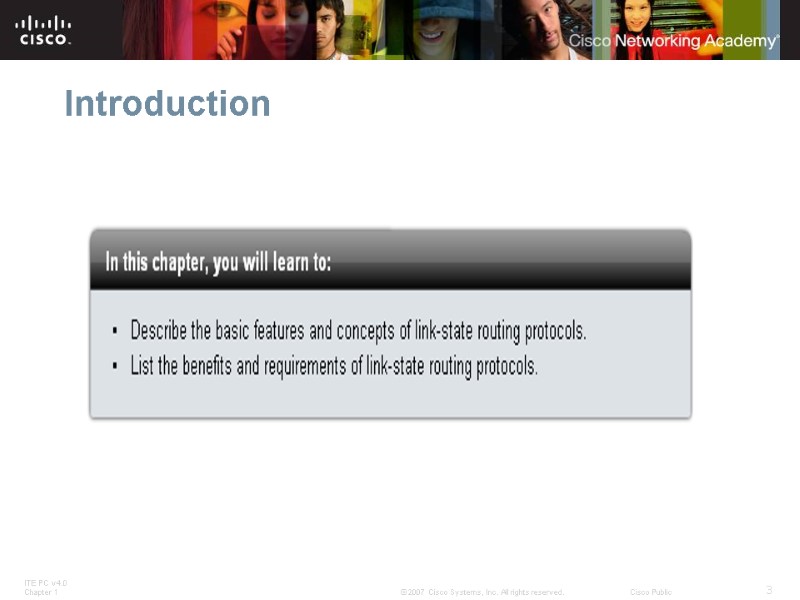
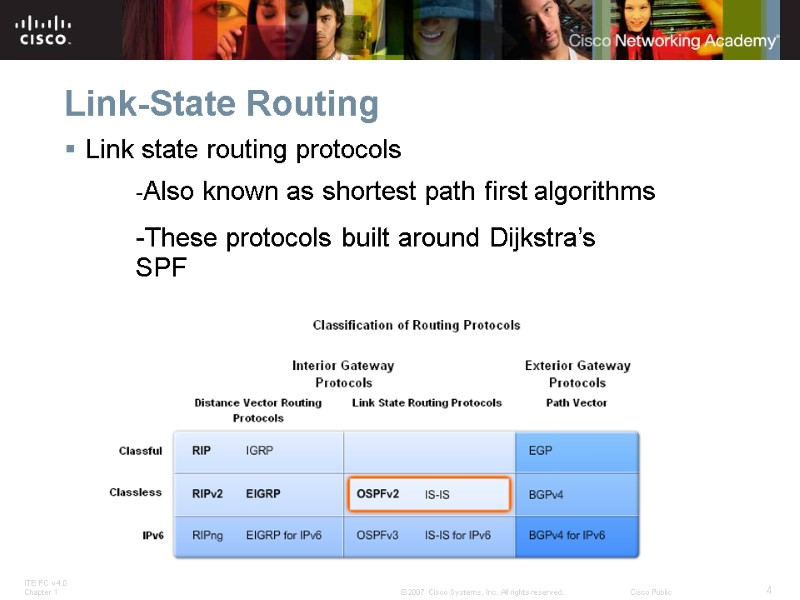
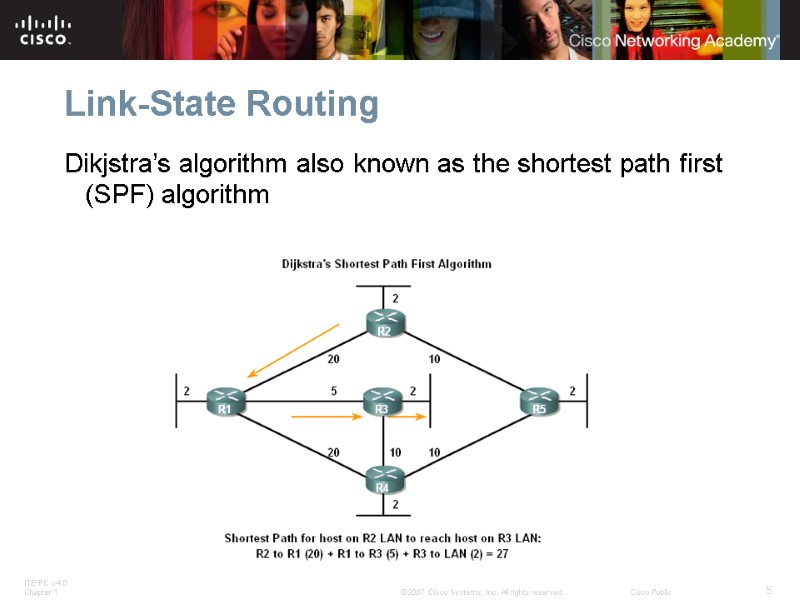
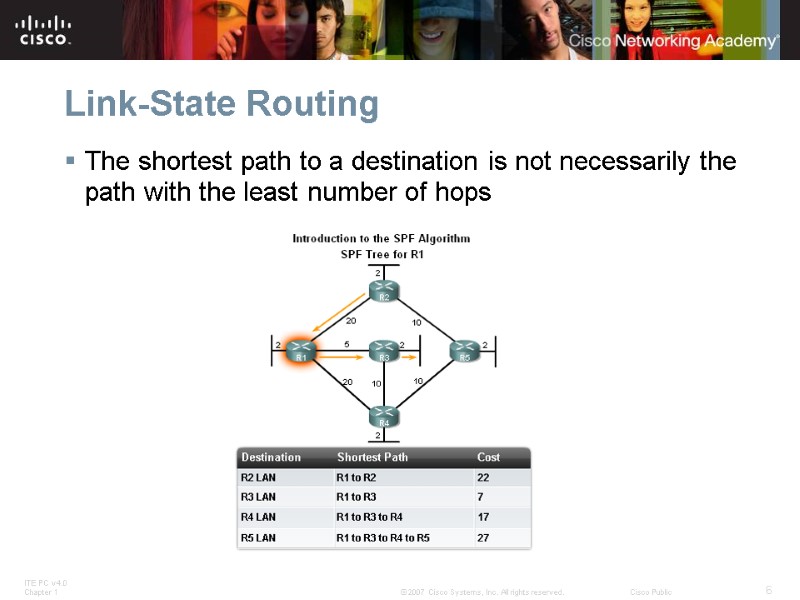
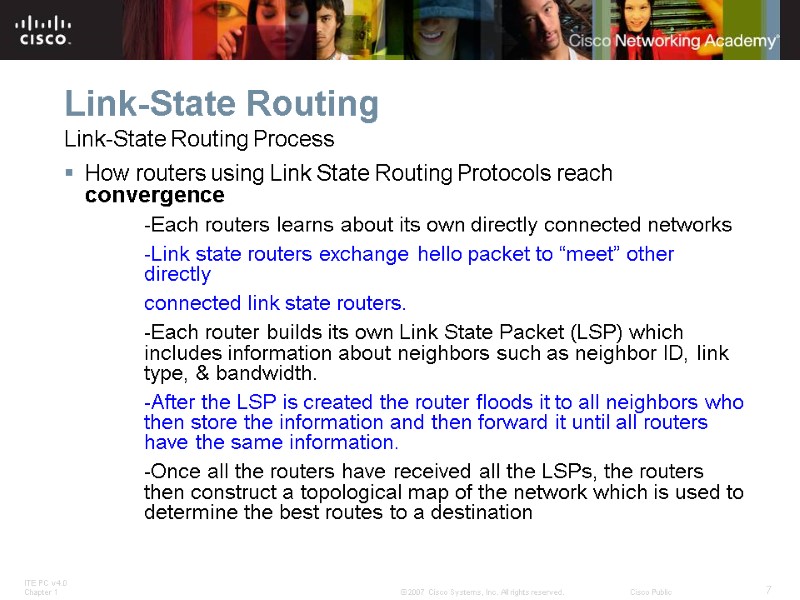
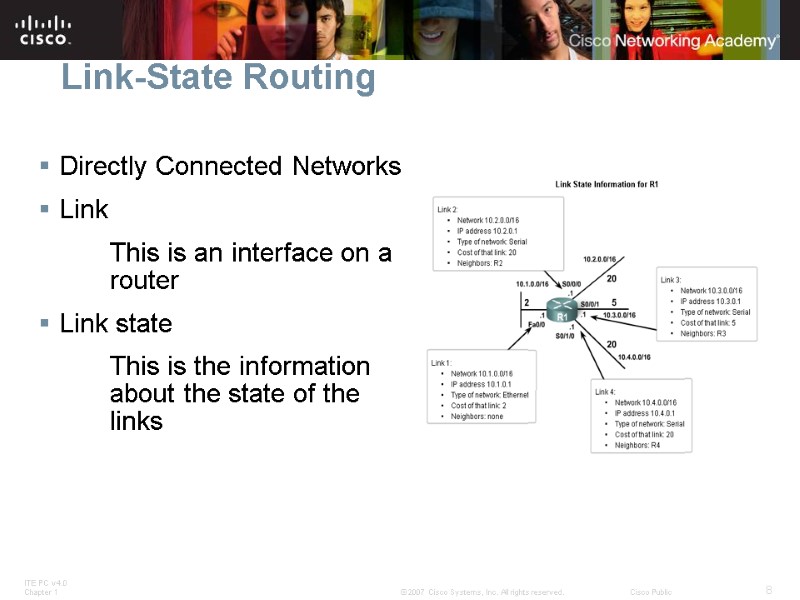
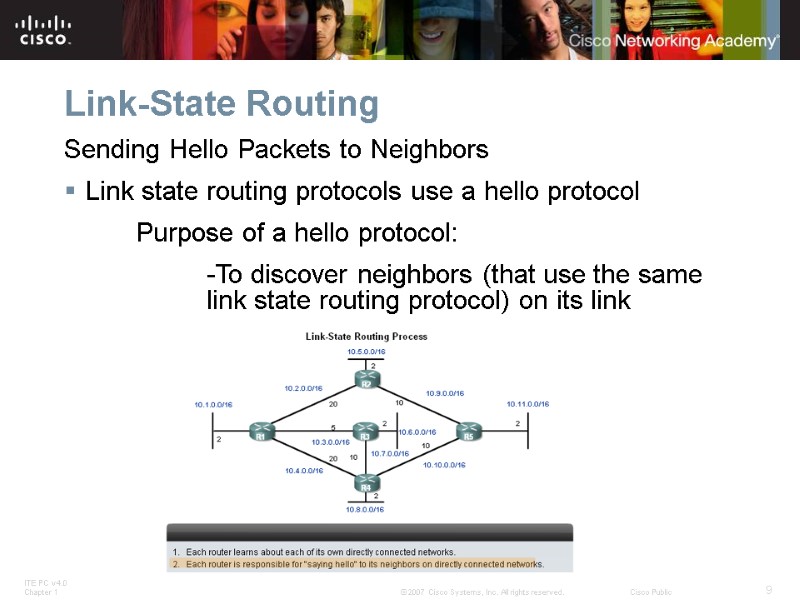
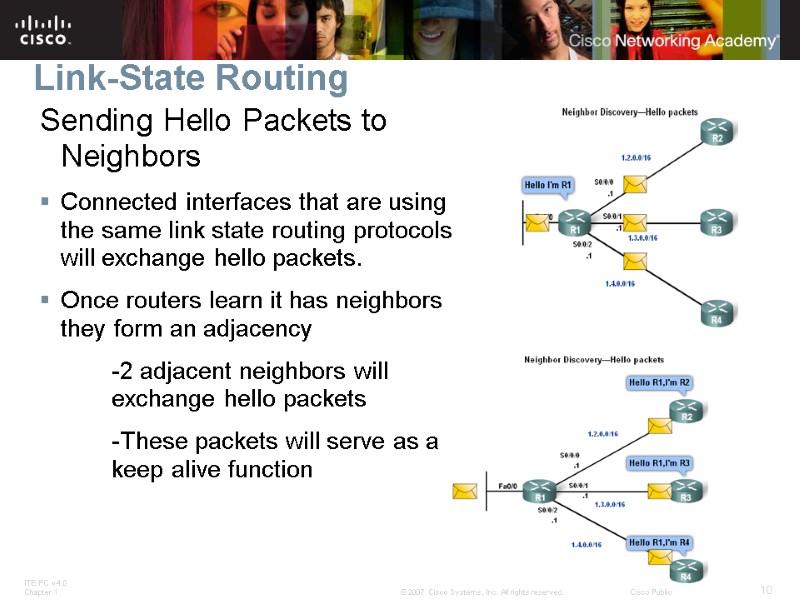
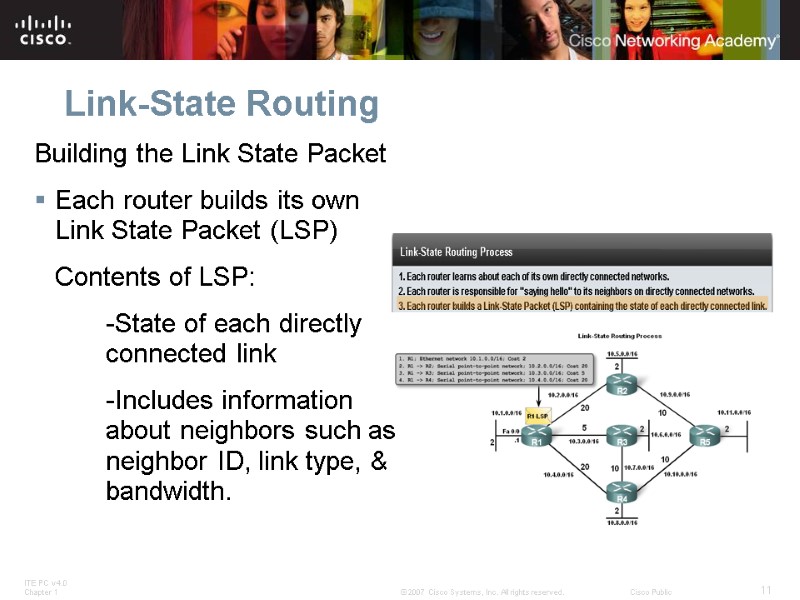
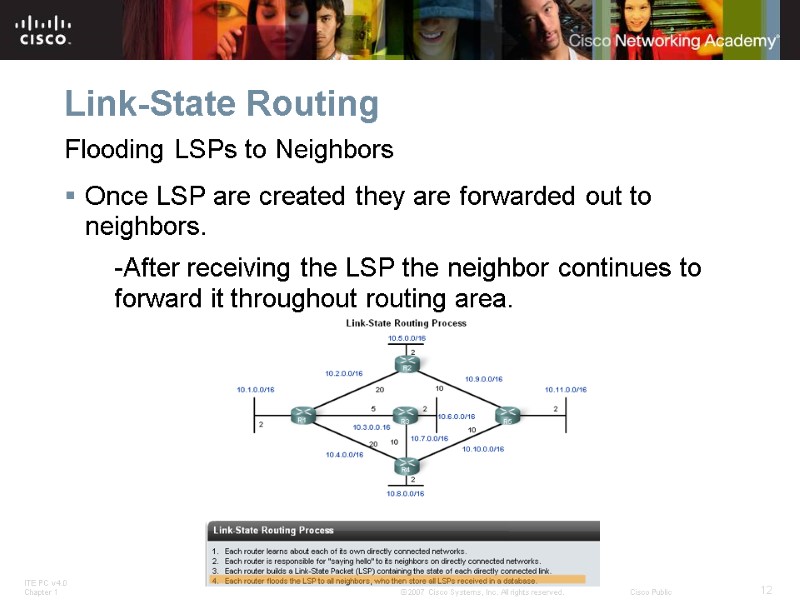
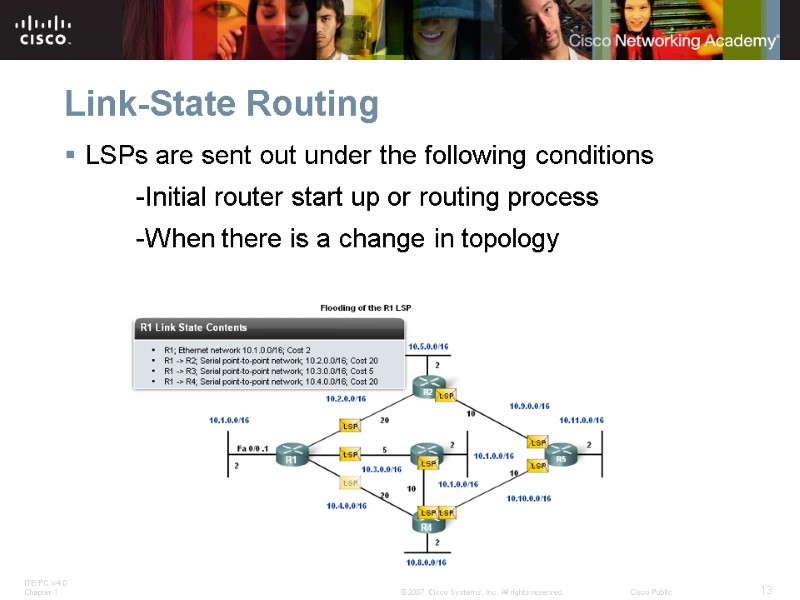

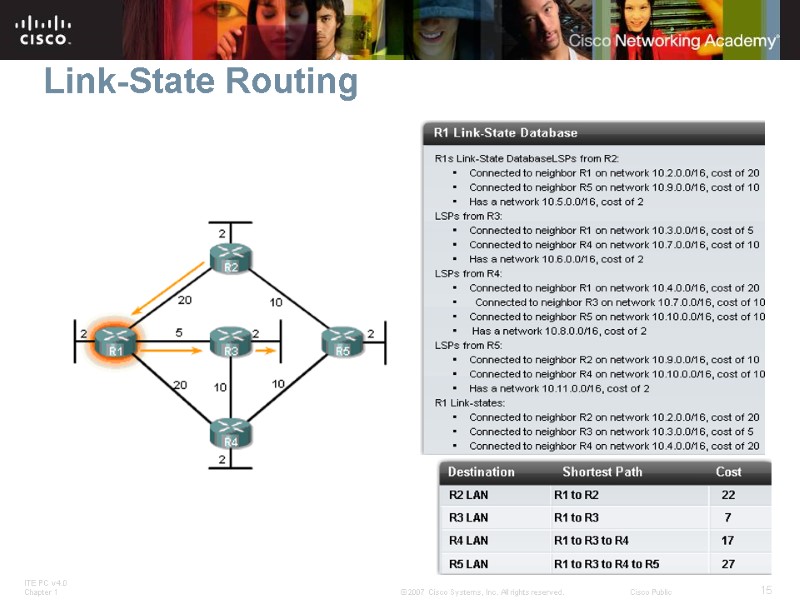
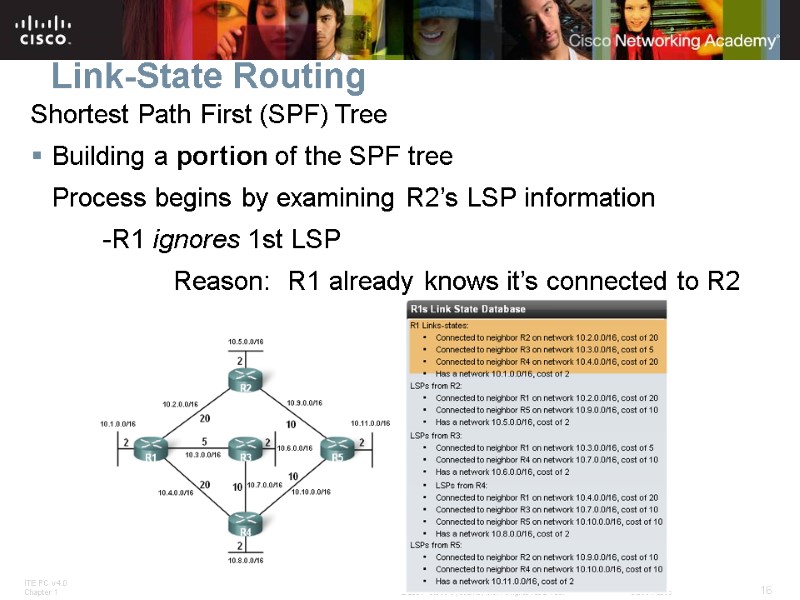
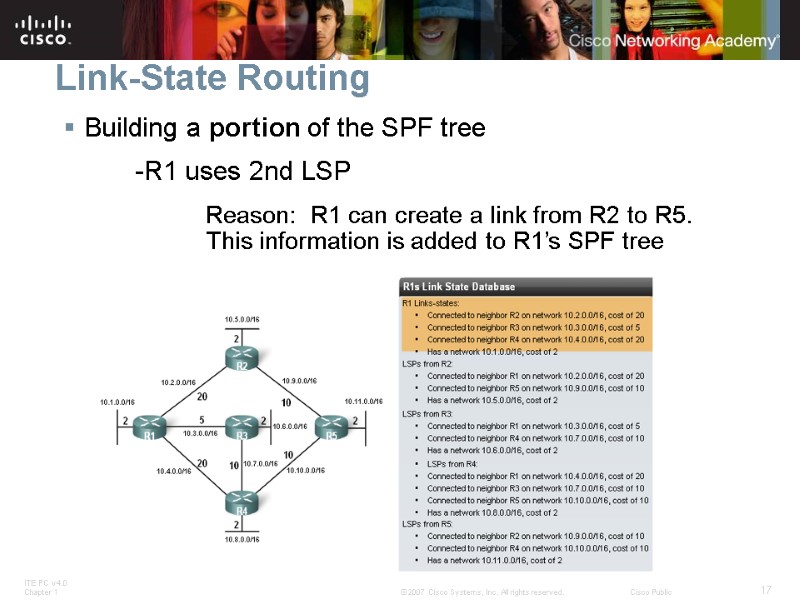
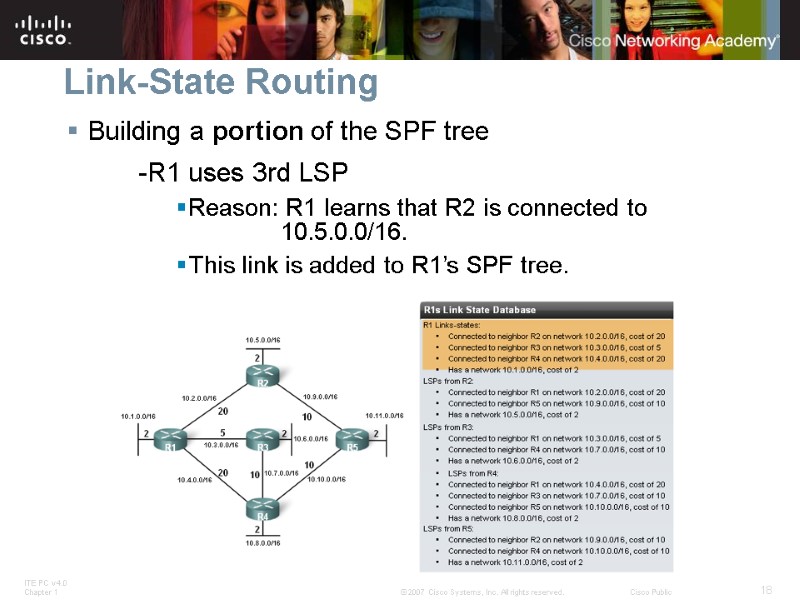
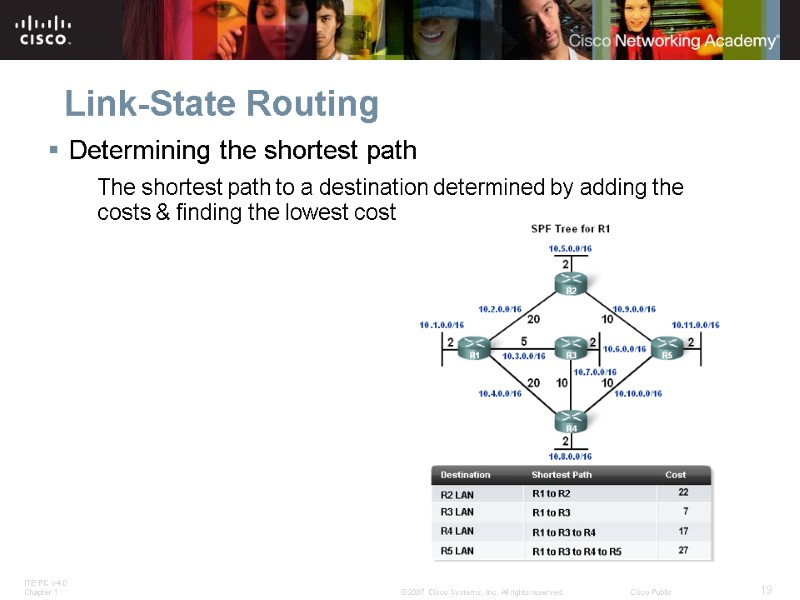
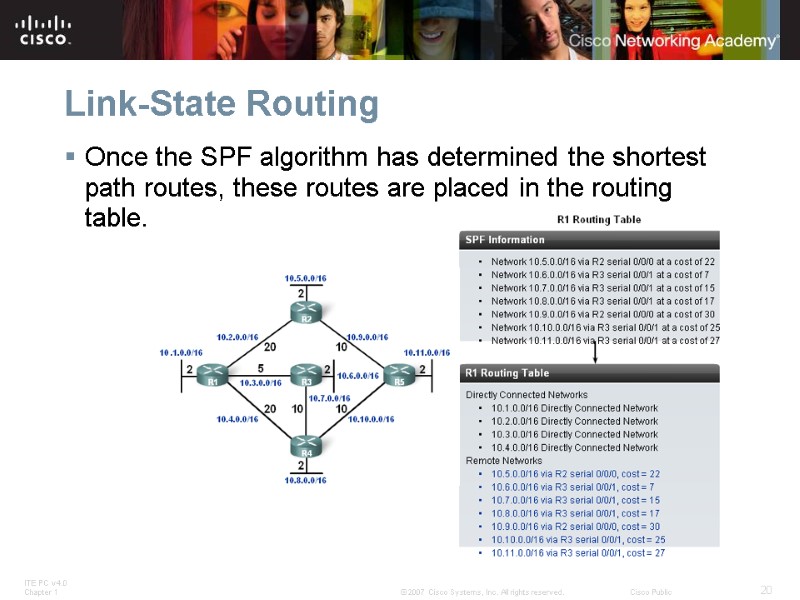
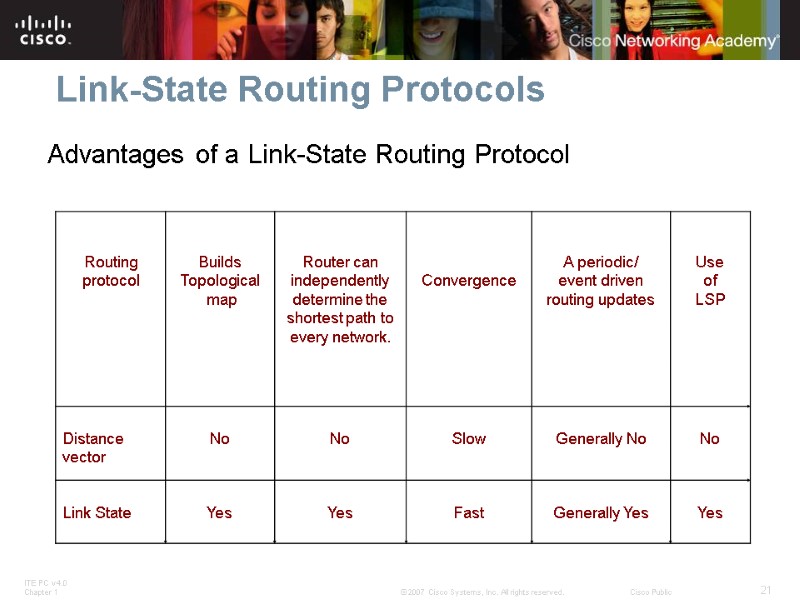

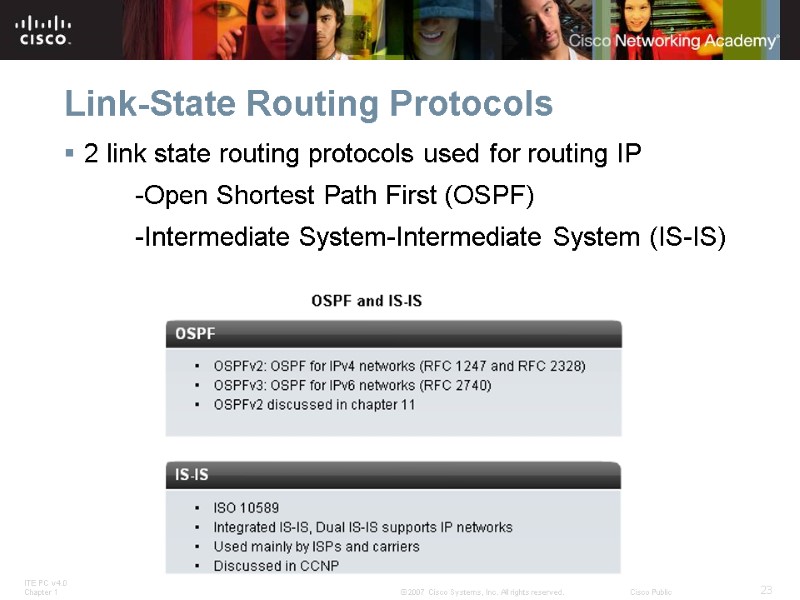
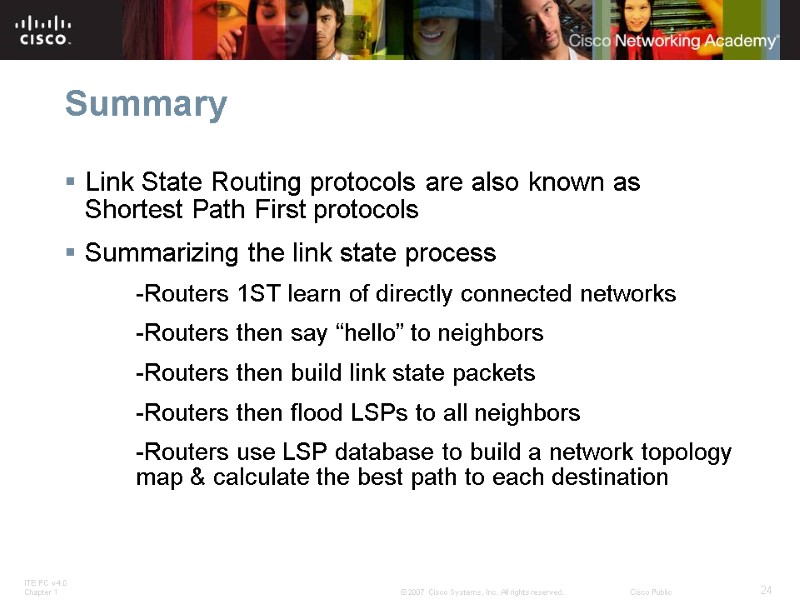
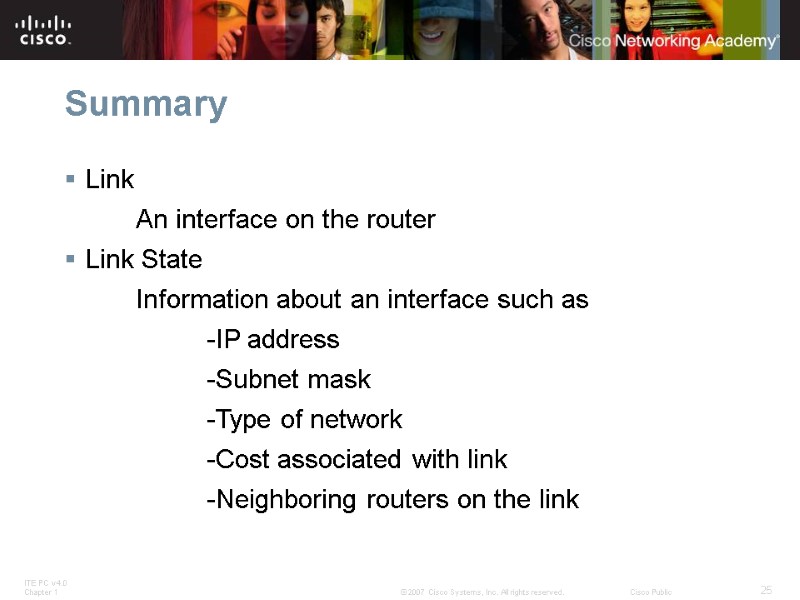
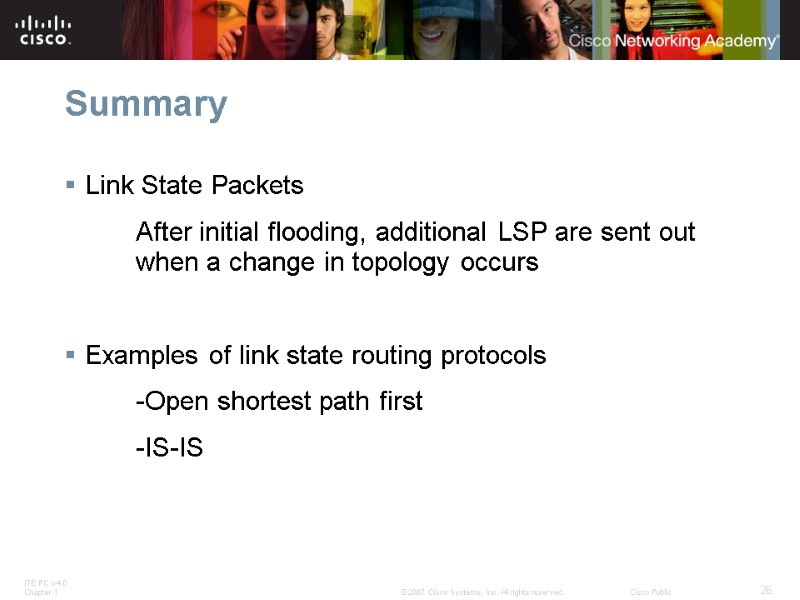

730-exploration_routing_chapter_10.ppt
- Количество слайдов: 27
 Link-State Routing Protocols Routing Protocols and Concepts – Chapter 10
Link-State Routing Protocols Routing Protocols and Concepts – Chapter 10
 Objectives Describe the basic features & concepts of link-state routing protocols. List the benefits and requirements of link-state routing protocols.
Objectives Describe the basic features & concepts of link-state routing protocols. List the benefits and requirements of link-state routing protocols.
 Introduction
Introduction
 Link-State Routing Link state routing protocols -Also known as shortest path first algorithms -These protocols built around Dijkstra’s SPF
Link-State Routing Link state routing protocols -Also known as shortest path first algorithms -These protocols built around Dijkstra’s SPF
 Link-State Routing Dikjstra’s algorithm also known as the shortest path first (SPF) algorithm
Link-State Routing Dikjstra’s algorithm also known as the shortest path first (SPF) algorithm
 Link-State Routing The shortest path to a destination is not necessarily the path with the least number of hops
Link-State Routing The shortest path to a destination is not necessarily the path with the least number of hops
 Link-State Routing Link-State Routing Process How routers using Link State Routing Protocols reach convergence -Each routers learns about its own directly connected networks -Link state routers exchange hello packet to “meet” other directly connected link state routers. -Each router builds its own Link State Packet (LSP) which includes information about neighbors such as neighbor ID, link type, & bandwidth. -After the LSP is created the router floods it to all neighbors who then store the information and then forward it until all routers have the same information. -Once all the routers have received all the LSPs, the routers then construct a topological map of the network which is used to determine the best routes to a destination
Link-State Routing Link-State Routing Process How routers using Link State Routing Protocols reach convergence -Each routers learns about its own directly connected networks -Link state routers exchange hello packet to “meet” other directly connected link state routers. -Each router builds its own Link State Packet (LSP) which includes information about neighbors such as neighbor ID, link type, & bandwidth. -After the LSP is created the router floods it to all neighbors who then store the information and then forward it until all routers have the same information. -Once all the routers have received all the LSPs, the routers then construct a topological map of the network which is used to determine the best routes to a destination
 Link-State Routing Directly Connected Networks Link This is an interface on a router Link state This is the information about the state of the links
Link-State Routing Directly Connected Networks Link This is an interface on a router Link state This is the information about the state of the links
 Link-State Routing Sending Hello Packets to Neighbors Link state routing protocols use a hello protocol Purpose of a hello protocol: -To discover neighbors (that use the same link state routing protocol) on its link
Link-State Routing Sending Hello Packets to Neighbors Link state routing protocols use a hello protocol Purpose of a hello protocol: -To discover neighbors (that use the same link state routing protocol) on its link
 Link-State Routing Sending Hello Packets to Neighbors Connected interfaces that are using the same link state routing protocols will exchange hello packets. Once routers learn it has neighbors they form an adjacency -2 adjacent neighbors will exchange hello packets -These packets will serve as a keep alive function
Link-State Routing Sending Hello Packets to Neighbors Connected interfaces that are using the same link state routing protocols will exchange hello packets. Once routers learn it has neighbors they form an adjacency -2 adjacent neighbors will exchange hello packets -These packets will serve as a keep alive function
 Link-State Routing Building the Link State Packet Each router builds its own Link State Packet (LSP) Contents of LSP: -State of each directly connected link -Includes information about neighbors such as neighbor ID, link type, & bandwidth.
Link-State Routing Building the Link State Packet Each router builds its own Link State Packet (LSP) Contents of LSP: -State of each directly connected link -Includes information about neighbors such as neighbor ID, link type, & bandwidth.
 Link-State Routing Flooding LSPs to Neighbors Once LSP are created they are forwarded out to neighbors. -After receiving the LSP the neighbor continues to forward it throughout routing area.
Link-State Routing Flooding LSPs to Neighbors Once LSP are created they are forwarded out to neighbors. -After receiving the LSP the neighbor continues to forward it throughout routing area.
 Link-State Routing LSPs are sent out under the following conditions -Initial router start up or routing process -When there is a change in topology
Link-State Routing LSPs are sent out under the following conditions -Initial router start up or routing process -When there is a change in topology
 Link-State Routing Constructing a link state data base Routers use a database to construct a topology map of the network
Link-State Routing Constructing a link state data base Routers use a database to construct a topology map of the network
 Link-State Routing
Link-State Routing
 Link-State Routing Shortest Path First (SPF) Tree Building a portion of the SPF tree Process begins by examining R2’s LSP information -R1 ignores 1st LSP Reason: R1 already knows it’s connected to R2
Link-State Routing Shortest Path First (SPF) Tree Building a portion of the SPF tree Process begins by examining R2’s LSP information -R1 ignores 1st LSP Reason: R1 already knows it’s connected to R2
 Link-State Routing Building a portion of the SPF tree -R1 uses 2nd LSP Reason: R1 can create a link from R2 to R5. This information is added to R1’s SPF tree
Link-State Routing Building a portion of the SPF tree -R1 uses 2nd LSP Reason: R1 can create a link from R2 to R5. This information is added to R1’s SPF tree
 Link-State Routing Building a portion of the SPF tree -R1 uses 3rd LSP Reason: R1 learns that R2 is connected to 10.5.0.0/16. This link is added to R1’s SPF tree.
Link-State Routing Building a portion of the SPF tree -R1 uses 3rd LSP Reason: R1 learns that R2 is connected to 10.5.0.0/16. This link is added to R1’s SPF tree.
 Link-State Routing Determining the shortest path The shortest path to a destination determined by adding the costs & finding the lowest cost
Link-State Routing Determining the shortest path The shortest path to a destination determined by adding the costs & finding the lowest cost
 Link-State Routing Once the SPF algorithm has determined the shortest path routes, these routes are placed in the routing table.
Link-State Routing Once the SPF algorithm has determined the shortest path routes, these routes are placed in the routing table.
 Link-State Routing Protocols Advantages of a Link-State Routing Protocol
Link-State Routing Protocols Advantages of a Link-State Routing Protocol
 Link-State Routing Protocols Requirements for using a link state routing protocol Memory requirements Typically link state routing protocols use more memory Processing Requirements More CPU processing is required of link state routing protocols Bandwidth Requirements Initial startup of link state routing protocols can consume lots of bandwidth
Link-State Routing Protocols Requirements for using a link state routing protocol Memory requirements Typically link state routing protocols use more memory Processing Requirements More CPU processing is required of link state routing protocols Bandwidth Requirements Initial startup of link state routing protocols can consume lots of bandwidth
 Link-State Routing Protocols 2 link state routing protocols used for routing IP -Open Shortest Path First (OSPF) -Intermediate System-Intermediate System (IS-IS)
Link-State Routing Protocols 2 link state routing protocols used for routing IP -Open Shortest Path First (OSPF) -Intermediate System-Intermediate System (IS-IS)
 Summary Link State Routing protocols are also known as Shortest Path First protocols Summarizing the link state process -Routers 1ST learn of directly connected networks -Routers then say “hello” to neighbors -Routers then build link state packets -Routers then flood LSPs to all neighbors -Routers use LSP database to build a network topology map & calculate the best path to each destination
Summary Link State Routing protocols are also known as Shortest Path First protocols Summarizing the link state process -Routers 1ST learn of directly connected networks -Routers then say “hello” to neighbors -Routers then build link state packets -Routers then flood LSPs to all neighbors -Routers use LSP database to build a network topology map & calculate the best path to each destination
 Summary Link An interface on the router Link State Information about an interface such as -IP address -Subnet mask -Type of network -Cost associated with link -Neighboring routers on the link
Summary Link An interface on the router Link State Information about an interface such as -IP address -Subnet mask -Type of network -Cost associated with link -Neighboring routers on the link
 Summary Link State Packets After initial flooding, additional LSP are sent out when a change in topology occurs Examples of link state routing protocols -Open shortest path first -IS-IS
Summary Link State Packets After initial flooding, additional LSP are sent out when a change in topology occurs Examples of link state routing protocols -Open shortest path first -IS-IS


